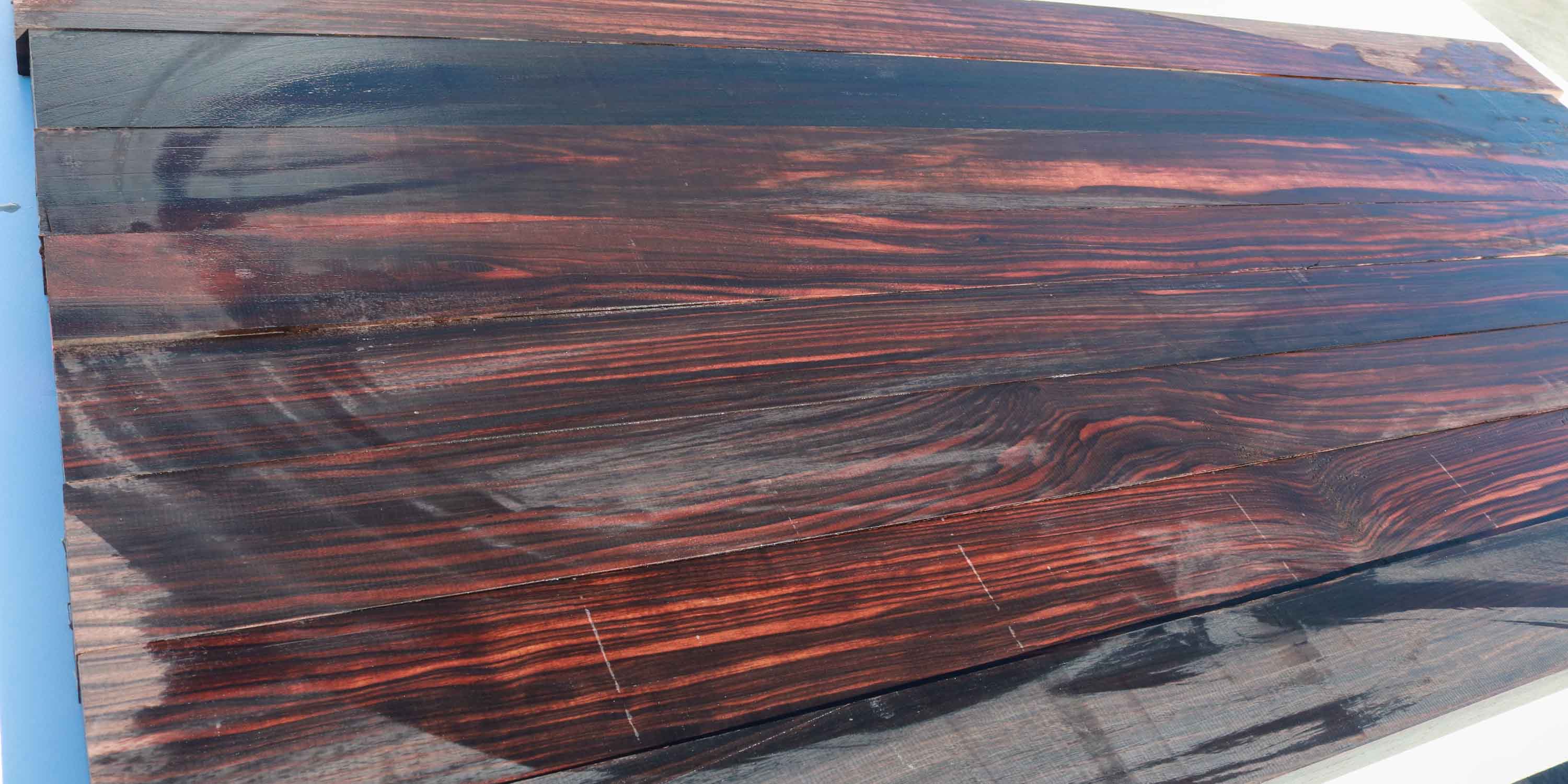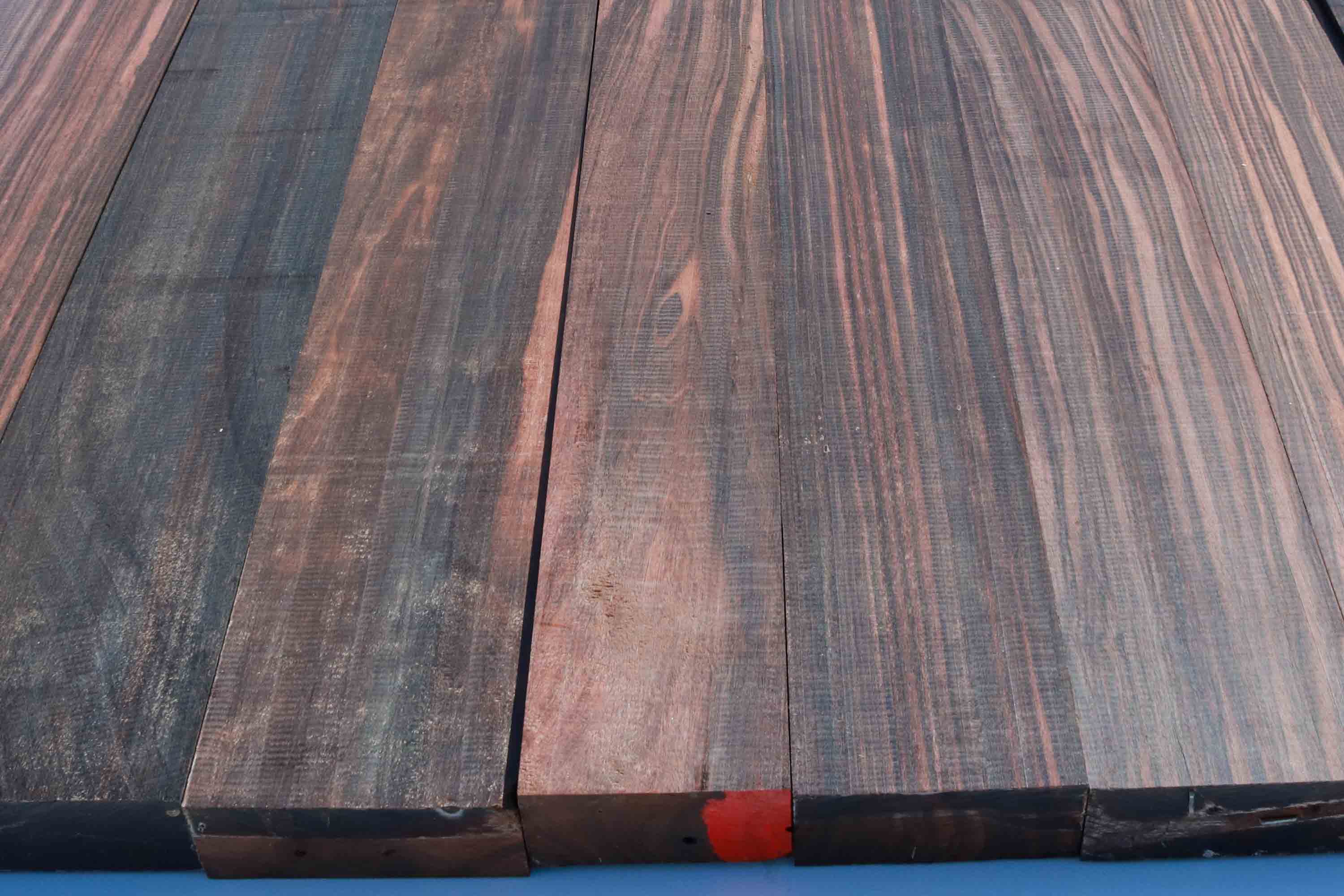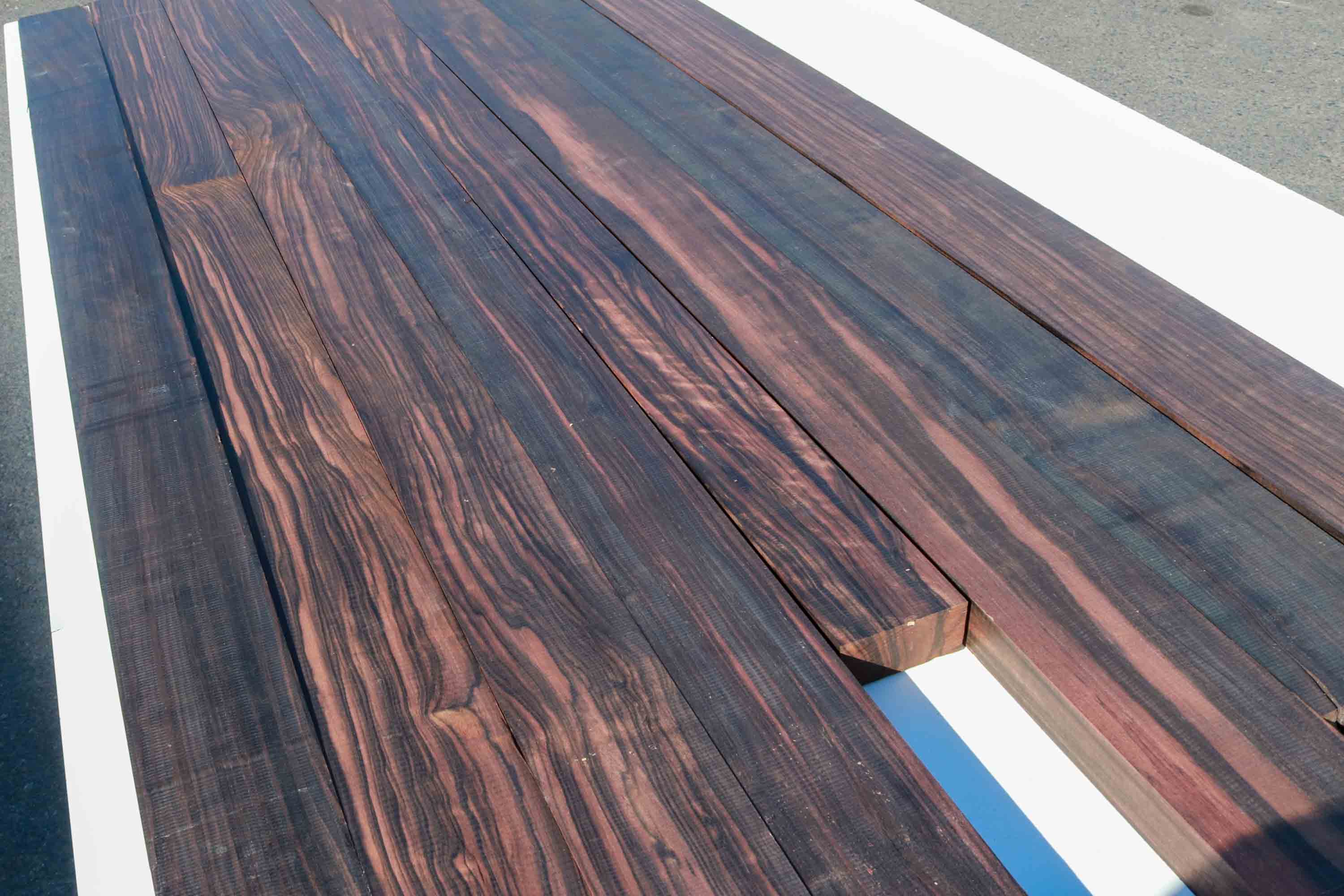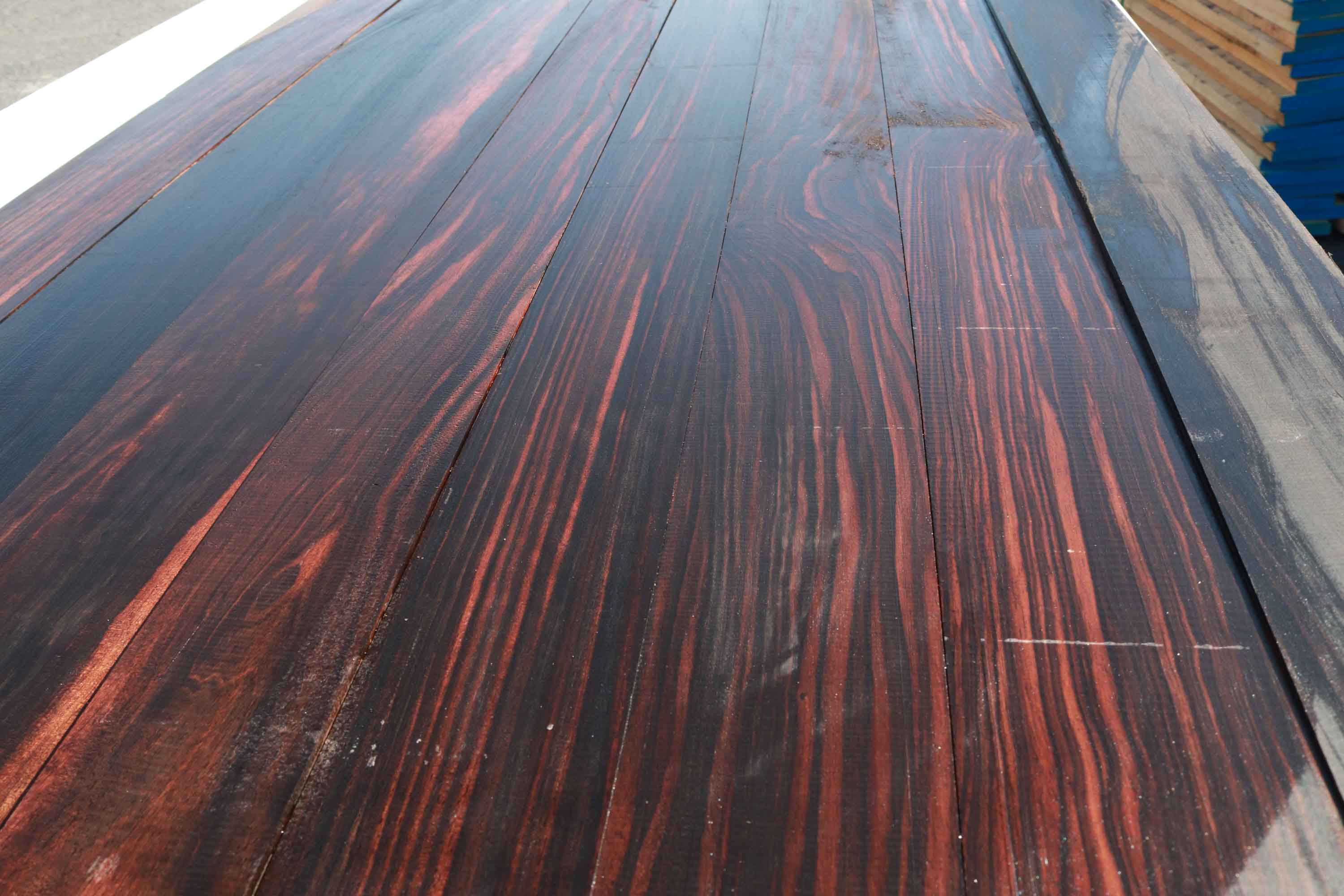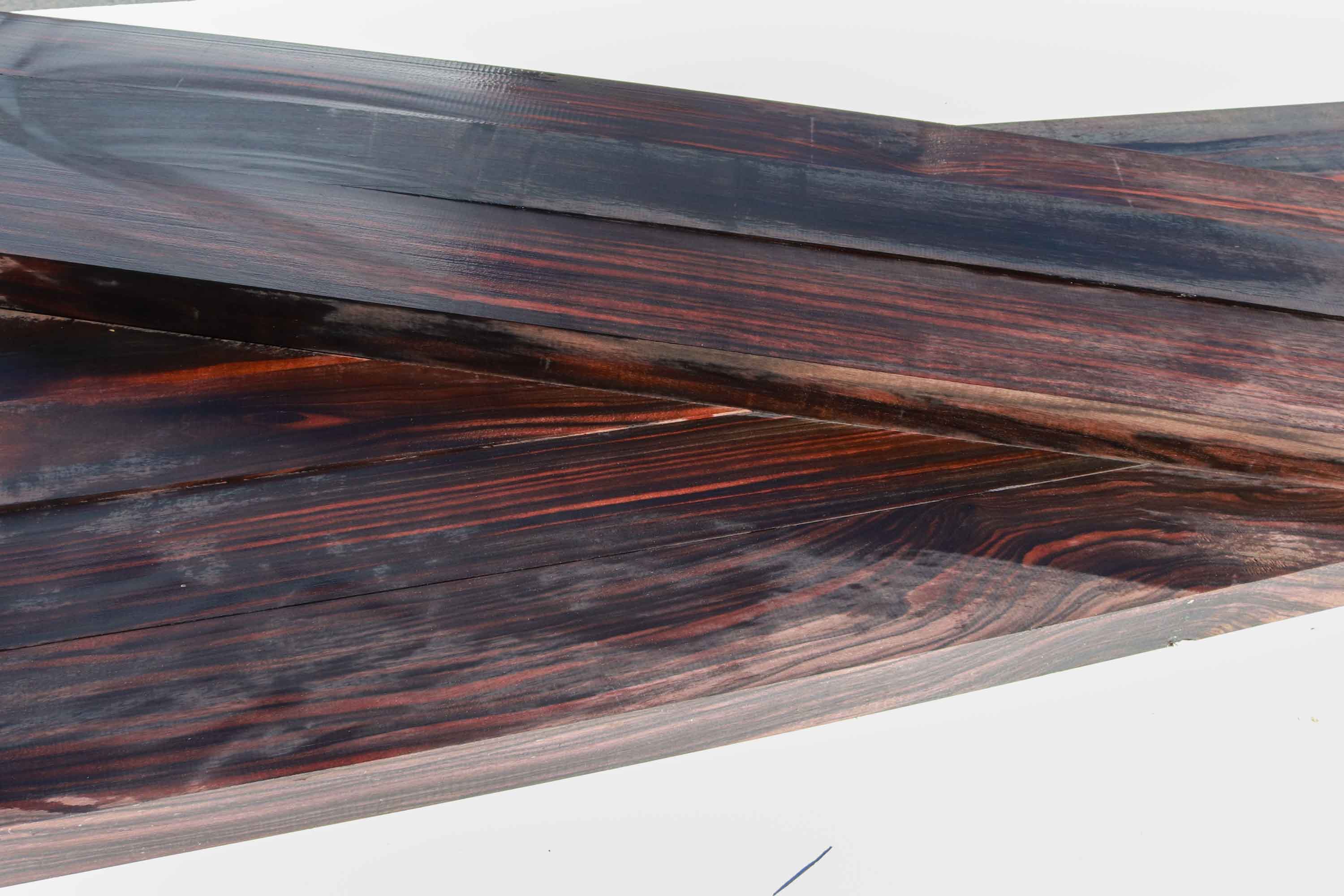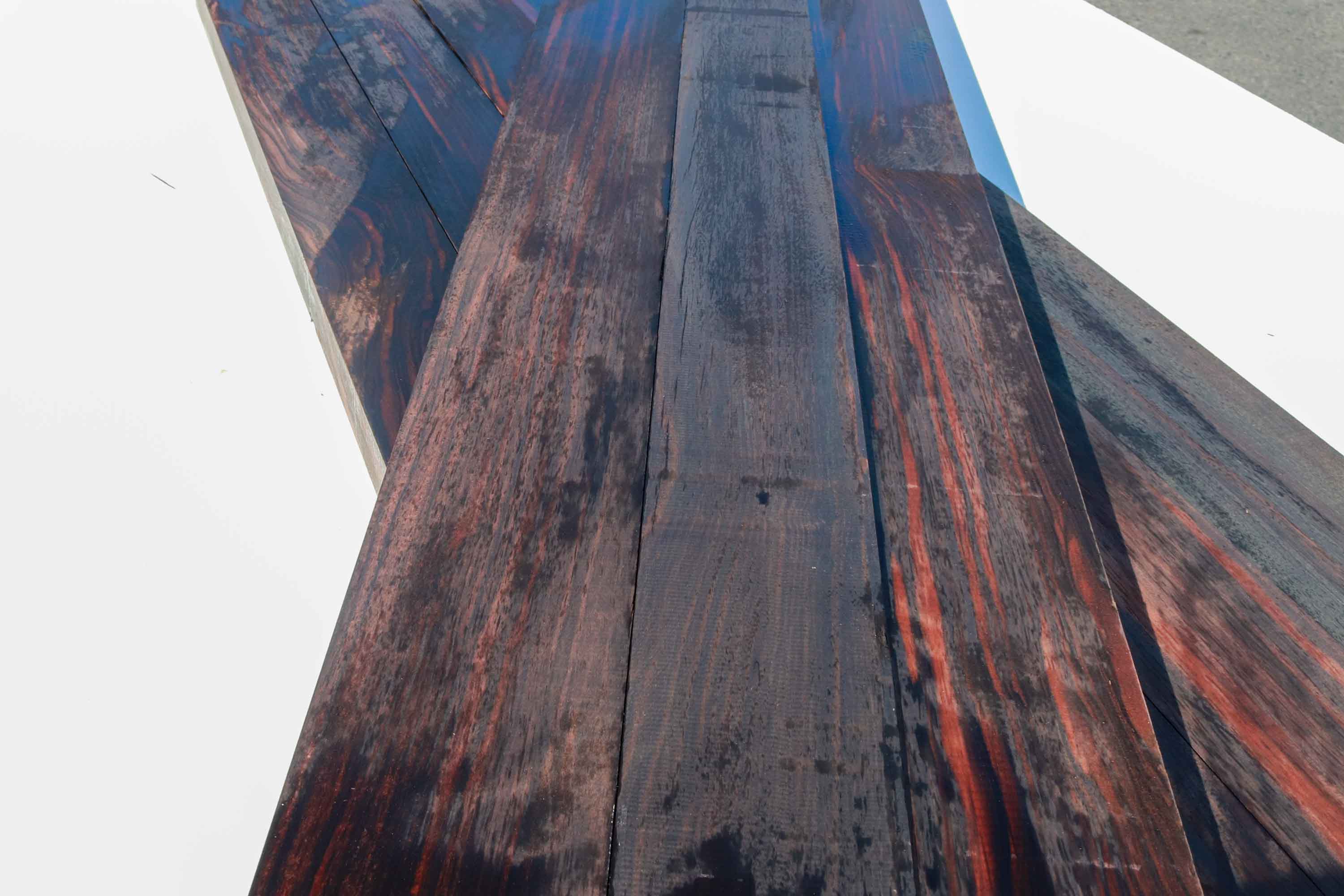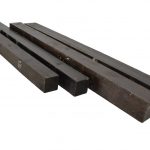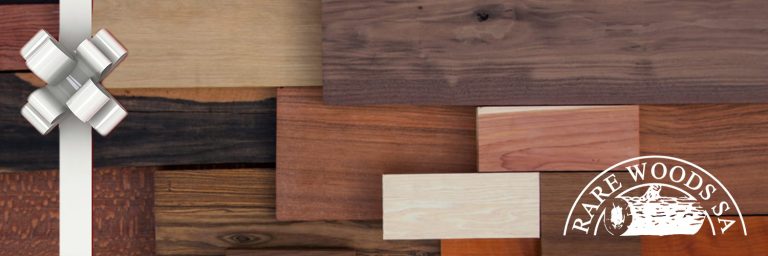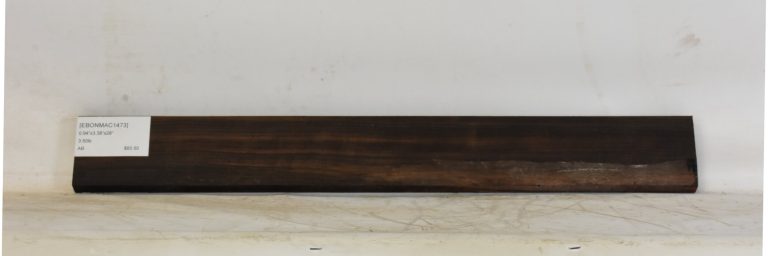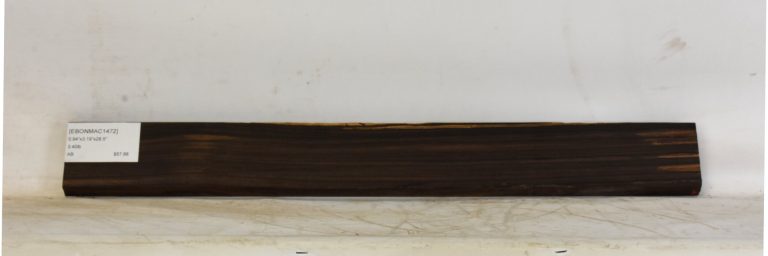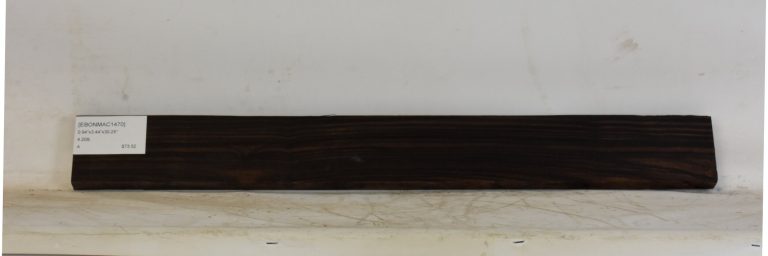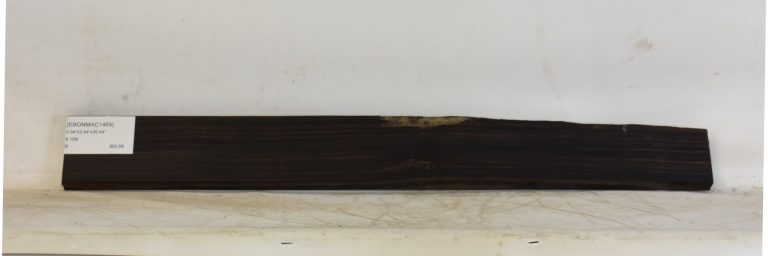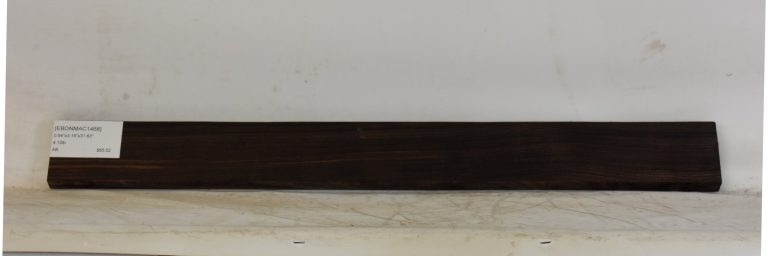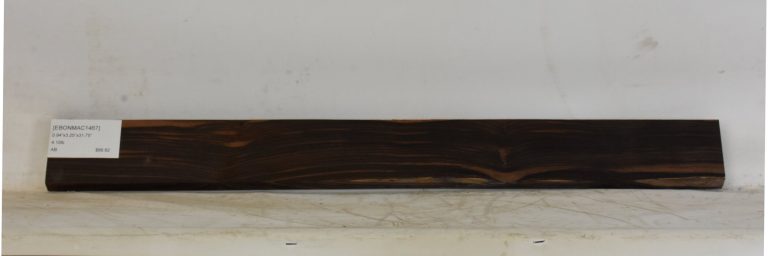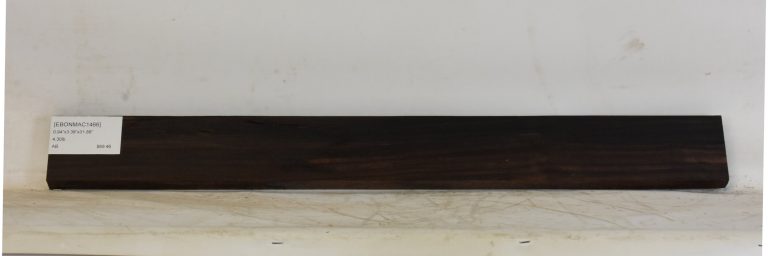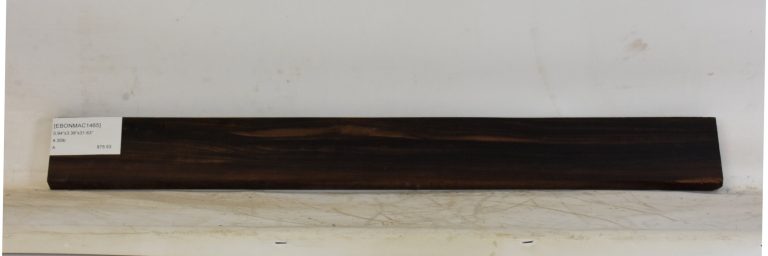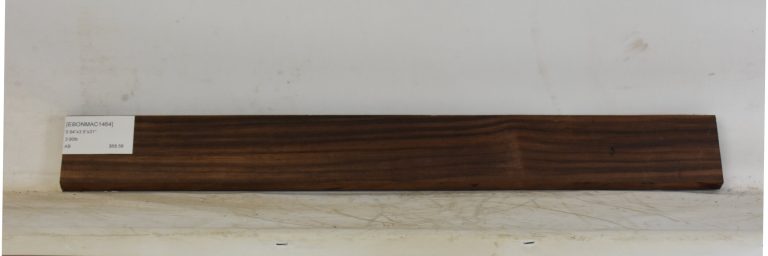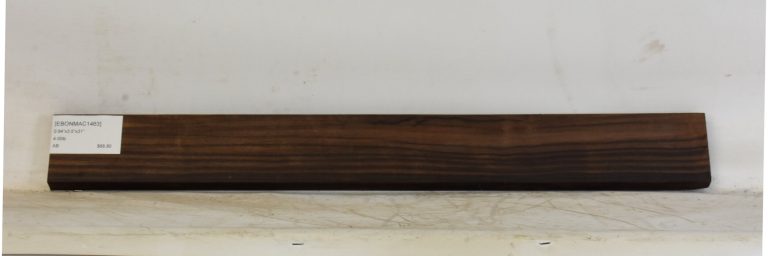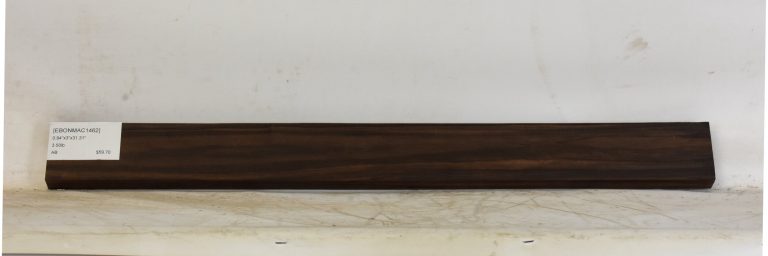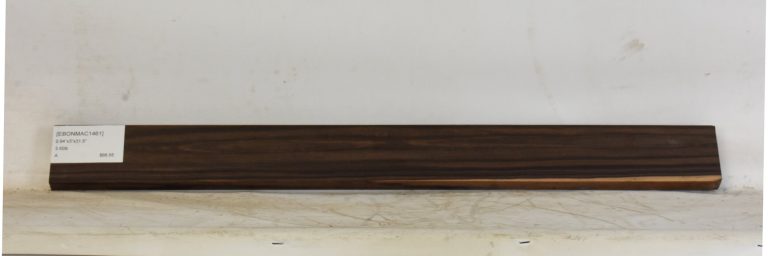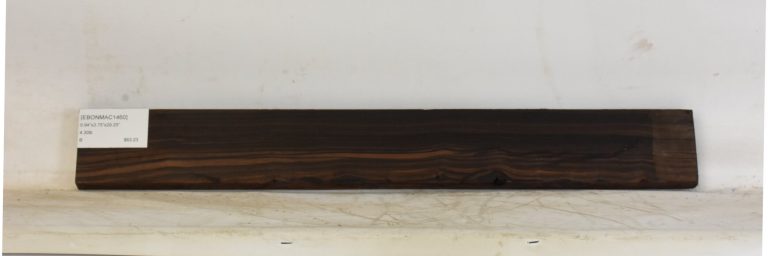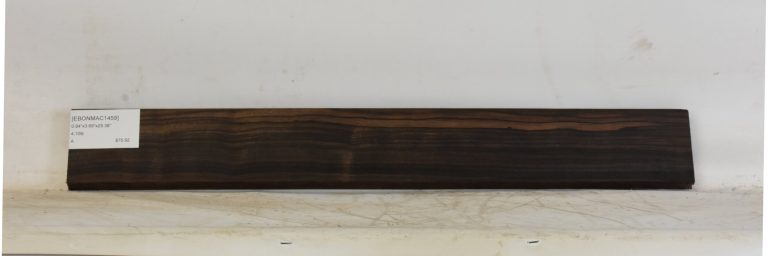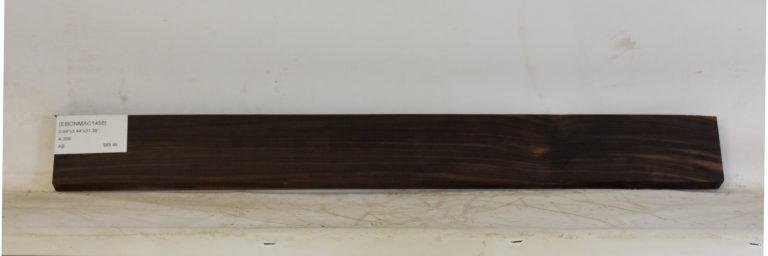Ebony – Macassar
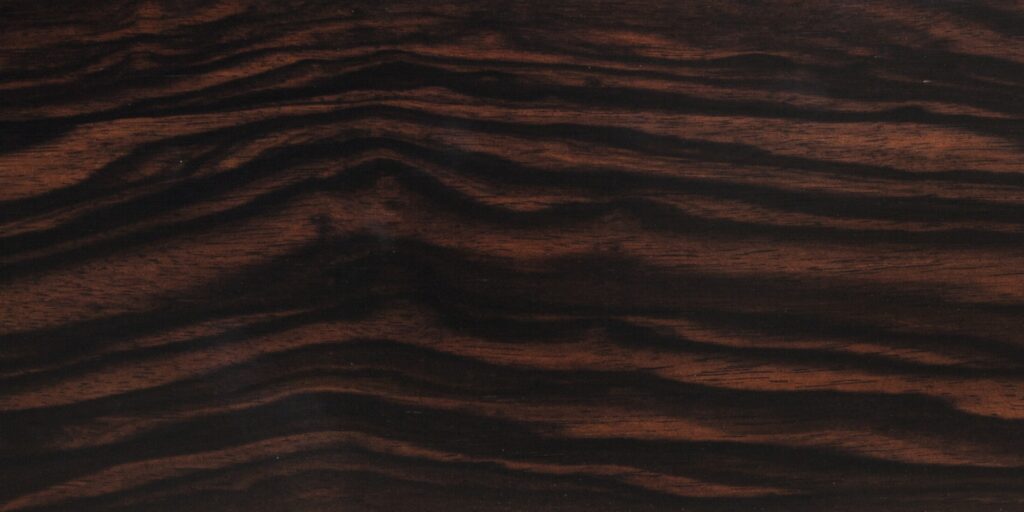
Macassar Ebony is known for its typically striped appearance, with usual colors typically dominated by deep browns although green, yellow, burgundy, red, orange and even peach secondary colors can highlight more spectacular pieces. Sapwood can range from a dull tan to a light golden brown, or sometimes even a muted orange, peach or light pink. In addition to its constant demand with veneer mills, it is highly-prized by guitar luthiers. Its great density gives the wood tremendous resonance, making it ideally suited for acoustic guitar back-and-sides or fretboards.
Macassar Ebony is noted for its striped appearance, although finding long, consistent grain patterns can be difficult on longer pieces. Usually its stripes are fairly large and bold — often with twists and overlaps — although occasionally (more desirable) pieces with fine, tight-knit, consistent striping can be found.
Like many woods of comparable density, it can be difficult to work and hard on blades, but that is of little concern to those who have experience with this regal ebony species. Southeast Asia produces some astounding exotics; Macassar Ebony is, most certainly, one of its renowned, trademark species.
This species is not listed in the CITES Appendices, but is listed as “Vulnerable” on the IUCN Red List of Threatened Species.
Why We Love This Wood
One of our favorite species, Macassar Ebony just oozes class and sophistication.
Client Creations
Quick Look

A Popular Choice in
Vital Statistics
| Main Color Group | Variegated |
| Grain Pattern | Figured |
| Avg Dry Weight - LB/BF | 5.8 |
| Avg Dry Weight - KG/M3 | 1120 |
| Janka Hardness - LBF | 3220 |
| Janka Hardness - N | 14140 |
PRE-CUT SIZES (Ebony – Macassar)
LUMBER PACKS (Ebony – Macassar)
0 resultsTitle
Qty
Grade
Price
SHOP ALL (Ebony – Macassar)
Browse SIMILAR lumber products by size, thickness, type or price
Search With Filters
$57.88 $46.30
$60.68 $48.54
$68.80 $55.04
$63.23 $50.58
ALSO AVAILABLE (Ebony – Macassar)
Description
Grade
UOM
Price
6/4 Lumber

